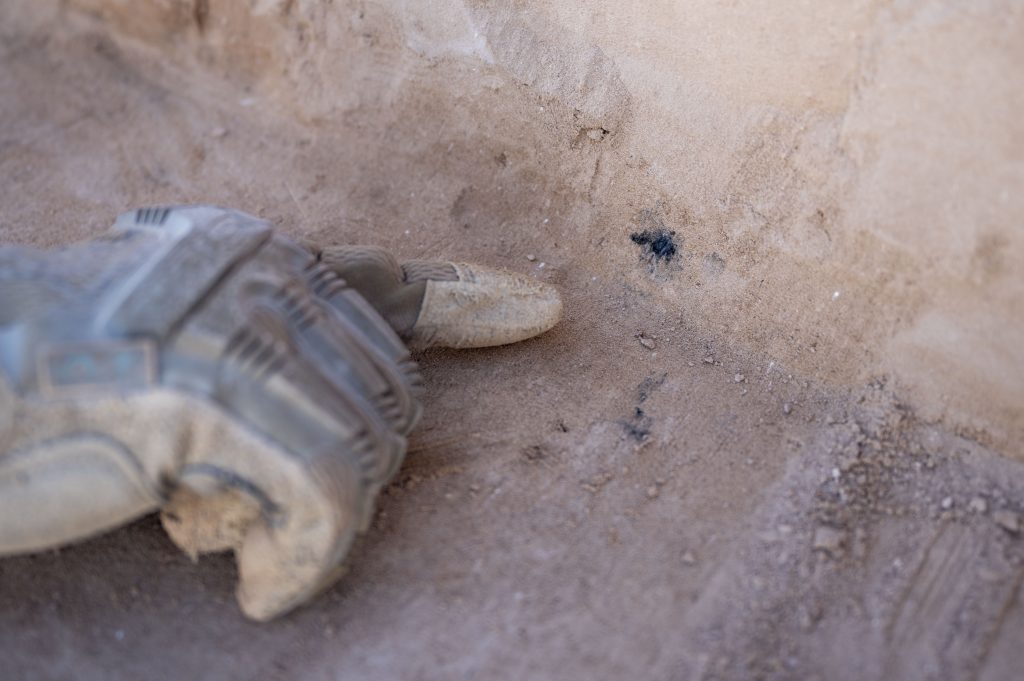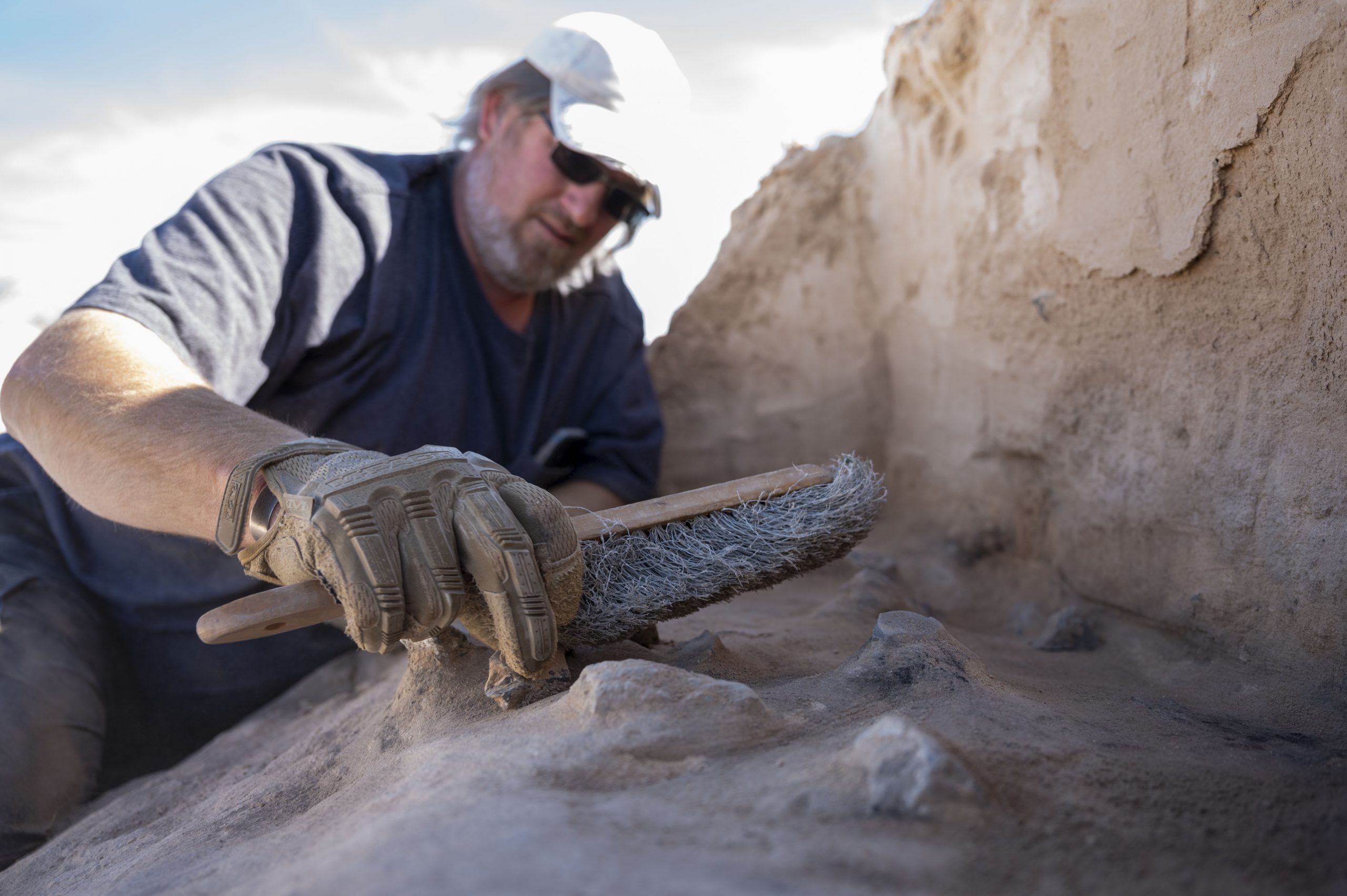Two researchers have stumbled upon an 8,200-year-old campsite formerly covered by sand dunes at the Holloman Air Force Base just outside of Alamogordo, New Mexico.
While driving past the side of a roadcut, the geomorphologists from the University of Arizona noticed “an unusual rock sticking out,” a spokesperson from the base explained over email. Upon closer inspection, the duo realized the rock might be an artifact, and contacted Matthew Cuba, the 49th Civil Engineer Squadron cultural resource manager. Cuba and his team unearthed “a significant and well-preserved site” over six feet beneath the earth, according to the base’s source.
“The formation of the white sand dunes inadvertently buried the site, with windblown silt protecting the delicate archaeological remains,” Cuba remarks in this week’s release “This site marks a pivotal moment in shedding light on the area’s history and its early inhabitants.”
Fragments found at the Paleo-Archaic site. (U.S. Air Force photo by Airman 1st Class Isaiah Pedrazzini)
His team found some 70 artifacts scattered there, from flake stones to an early groundstone and the mesquite charcoal remnants of a campfire carbon dated to the Paleo-Archaic era, when humans shifted from a hunter gatherer lifestyle to an agricultural one, as earth exited the glacial Pleistocene Epoch and entered the Holocene. By comparison, evidence from New Mexico’s Sandia Mountains indicated humans have lived in the state for nearly 25,000 years, with Native American history in New Mexico extends back at least 2,500 years.
Alamogordo was settled 125 years ago, and Holloman Air Force Base—of Trinity Project fame—was founded 75 years ago. The base’s release purports that this is just one of 400 archaeological finds made so far within its bounds, adjacent to White Sands National Park. This latest discovery, however, now ranks amongst the oldest in the Tularosa Basin—also home to the Three Rivers Petroglyphs site. The ancient campsite is even older than White Sands’ gypsum dunes, which formed an estimated 6,500 to 7,000 years ago.

Matthew Cuba, 49th Civil Engineer Squadron cultural resource manager, uncovers charcoal stains near a hearth of a Paleo-Archaic hearth. (U.S. Air Force photo by Airman 1st Class Isaiah Pedrazzini)
While the new site is formally titled LA202921, tradition on the base dictates that whoever discovers a historically significant site gets to decide its colloquial name. The sleuths behind this find ultimately titled it Gomolak Overlook, in homage to the base’s retired cultural resource manager. “We thought it would be fitting to name the site after him because of the many years he dedicated himself to protecting cultural resources here,” their spokesperson said.
In fact, the base benefits these grounds in the sense that they care for all artifacts discovered throughout, rather than leaving them to the moral compass of homeowners or tourists, who might find relics by accident. These artifacts in particular will head off to a facility in Fort Bliss in Texas, “where they will be made available to researchers,” the base’s spokesperson said.
Follow Artnet News on Facebook:



